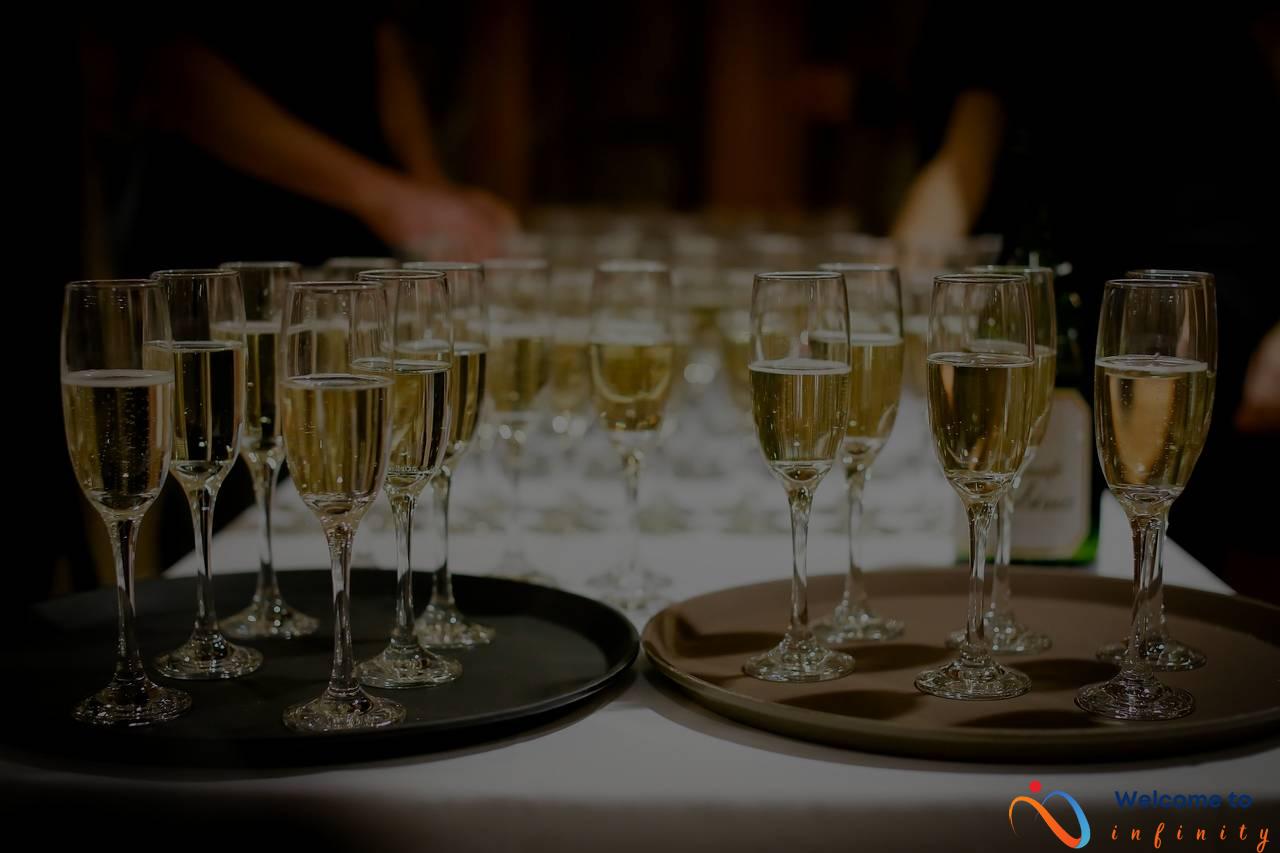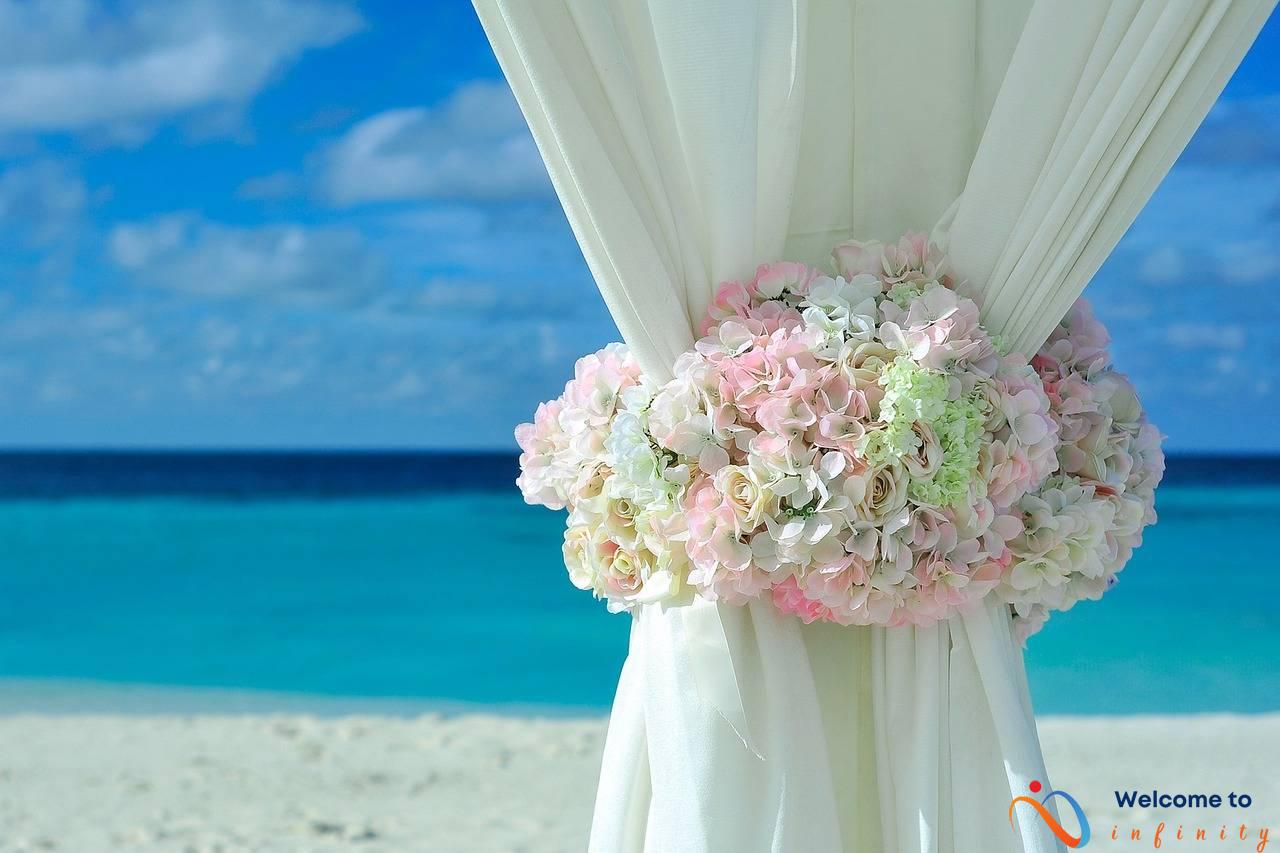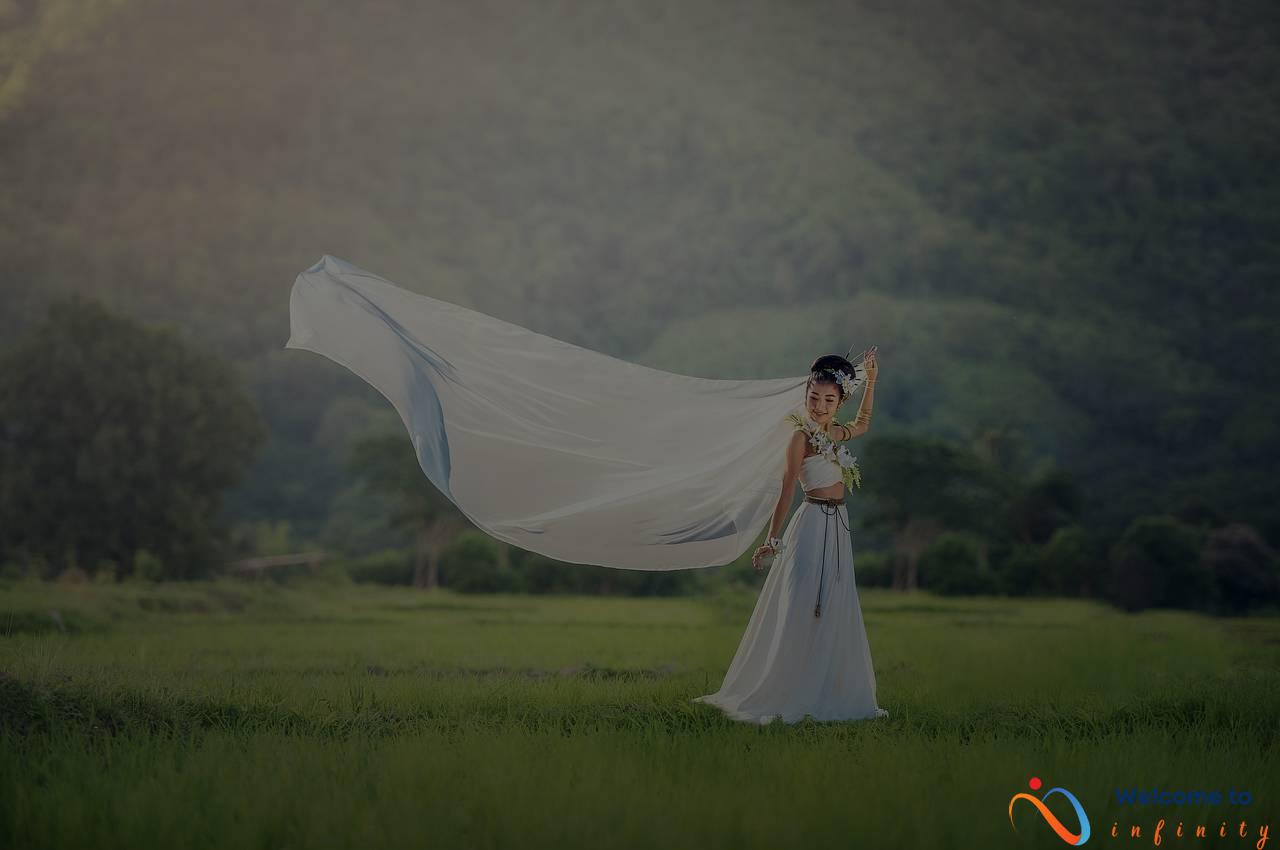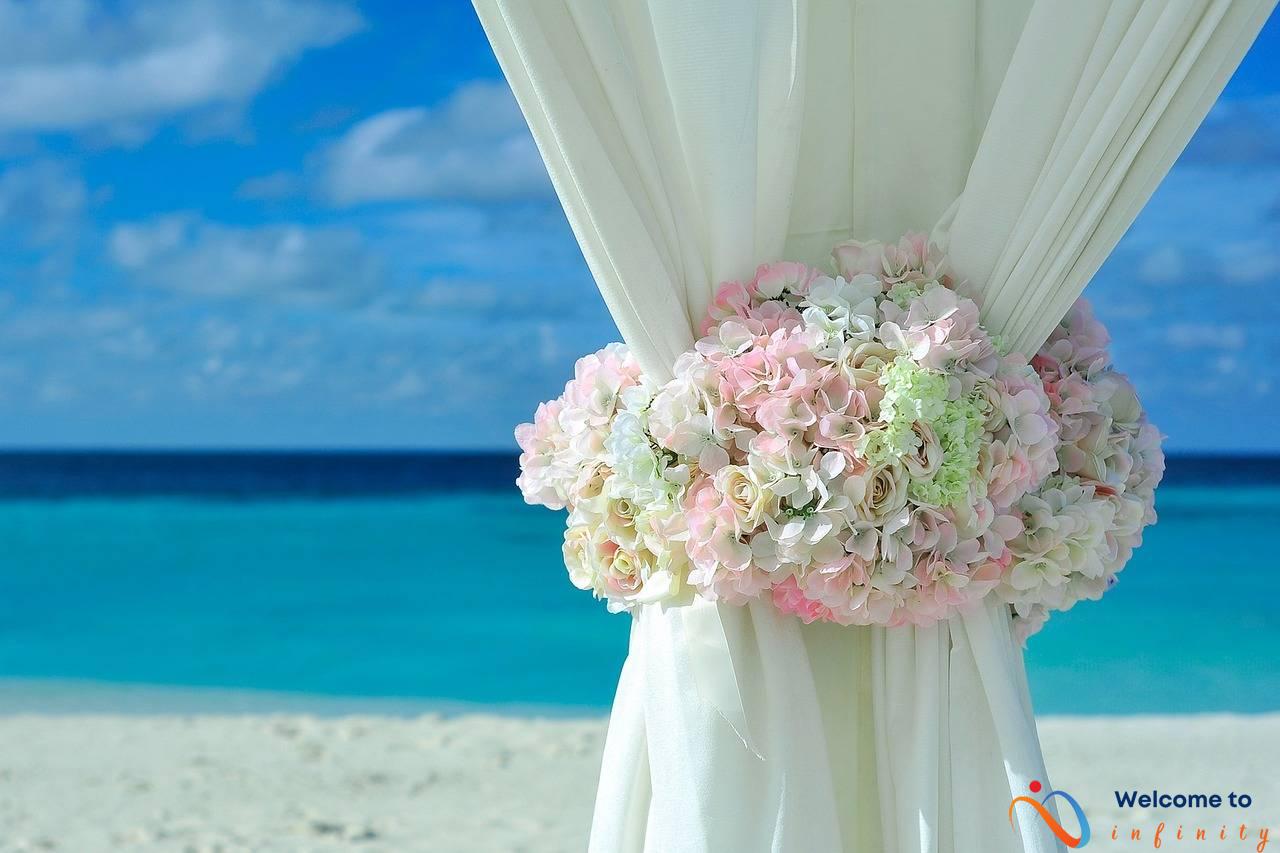Your wedding day is one of the most special occasions of your life. It's a day where you can celebrate your love for your significant other and share it with your family and friends. But, have you considered adding a unique touch to your wedding by incorporating multicultural symbols and traditions? Not only will this make your day more meaningful, but it can also be a beautiful way to express respect for diverse cultures. Here are some tips on how to do it!
Firstly, it's important to understand the meaning of different cultural symbols before incorporating them into your wedding theme. It's essential to research and familiarize yourself with the most significant symbols to ensure that you use them appropriately. This will also help you to avoid any cultural insensitivity issues. Additionally, you should keep in mind that different cultures have different color meanings. For example, in Indian culture, colors like red and gold symbolize prosperity and fertility, while in Chinese culture, red represents good fortune. So, try to incorporate these colors into your wedding décor to add a cultural touch.
Another way to incorporate cultural traditions into your wedding theme is through your clothing. Consider wearing traditional clothing that carries cultural significance. For example, a bride can wear a red sari for an Indian wedding, and a groom can put on a kilt for a Scottish wedding. You can also accessorize with jewelry, scarves, or headpieces that hold cultural significance.
To enhance the cultural relevance of your wedding, you can incorporate traditional flowers and decorations that represent your background. For example, cherry blossoms are a classic symbol of japanese culture, while henna is essential in an Indian wedding. You can also hang cultural banners around your wedding venue that represent your origins.
If you want to go a step further, consider making your wedding ceremony diverse by including multicultural elements. For example, you can have a multicultural dance group perform during the reception, incorporating a blend of different dance styles. You can also have an officiant who can speak multiple languages to make everyone feel included.
Finally, you can create a fusion experience by blending different cultural traditions together. For instance, you can serve fusion food that represents both cultures. You can also play a mix of western and ethnic music, or even write your vows in multiple languages.
By incorporating multicultural symbols and traditions into your wedding theme, you can create a unique and elegant wedding experience that you and your guests will never forget.
Understanding the Meaning of Culture
As we live in an increasingly diverse society, it is essential to understand and honor different cultures. One way to express respect for diversity is by incorporating multicultural symbols and traditions into your wedding theme. However, before you do that, you need to develop an understanding of the meaning of culture and its significance.
Culture is a way of life for a particular group of people that encompasses their beliefs, values, customs, and traditions. It includes everything from language and religion to food and fashion. Cultural symbols are visual representations of these beliefs, values, customs, and traditions. In many cultures, the symbols have significant meanings and are considered sacred, so it is important to understand their significance before using them in your wedding theme.
To familiarize yourself with the meaning of different cultural symbols, start by researching the traditions and practices of the culture you wish to honor. Find out the meanings of symbols used in their art, music, clothing or jewelry, and other aspects of their daily life. You can also consult with family members, friends, or experts in that particular culture to learn more about its practices and symbols.
Try to appreciate them for what they represent and avoid using them as mere decorations. For example, if you want to use a specific color or flower in your wedding theme, learn its cultural significance and use it thoughtfully and respectfully. By doing so, you not only enrich your wedding but also express respect towards diversity and honor different cultures.
Choosing the Right Symbol for Your Theme
When it comes to incorporating multicultural symbols into your wedding theme, it's essential to choose the right ones to ensure that your wedding is a meaningful and respectful celebration of different cultures. Here are some tips for selecting the most appropriate symbols to use:
- Research: Start by researching symbols and their meanings from the different cultures you want to incorporate into your wedding theme.
- Significance: Choose symbols that have a significant cultural importance and relevance to you and your partner.
- Simplicity: Keep it simple by choosing a few essential symbols and not overdoing it with too many different cultural elements.
- Consistency: Ensure that the symbols you choose are consistent with your overall wedding theme and complement each other well.
- Customization: Consider customizing the symbols to fit with your personality and preferences.
Some of the most commonly used multicultural symbols include mandalas, henna, lotus flowers, infinity symbols, and double happiness symbols. However, you can also be creative and choose symbols that are unique to you and your partner.
Another essential factor to consider is how you will use the symbols in your wedding. You can incorporate them into your wedding invitations, ceremony decor, table settings, and even your outfits. By thoughtfully selecting the right symbols and incorporating them in meaningful ways, you can create a wedding that truly reflects your multicultural love and celebration.
Understanding Color Meanings
The use of color in different cultures has a significant meaning, and incorporating it into your wedding theme can add a touch of diversity. In Asian cultures, red is a popular color that symbolizes good luck and happiness. Yellow is another color that represents joy and good fortune. In Indian weddings, the color red is used to signify love and fertility, while green represents prosperity and harmony. In Africa, blue is often used to symbolize water and life, and white symbolizes purity and peace.
When choosing colors for your wedding theme, consider the cultural meaning behind them. You can incorporate colors in various ways, such as in your wedding attire, decorations, and floral arrangements. If you want a subtle touch of cultural influence, you can use colors to highlight specific elements and incorporate them in small details.
For example, if you choose the color red for your wedding theme, you can add it to your floral arrangements by including red roses or red accents on your white floral displays. You can also incorporate it into your wedding invitations, table settings, and bridesmaids' dresses. By doing this, you can add a cultural significance to your wedding while maintaining a cohesive design.
Another approach is to create contrast by using opposing color schemes from different cultural traditions. For example, you can combine the vibrant reds of traditional Chinese weddings with the subtle blues and whites of a Scandinavian wedding theme. This can create a beautiful and unique fusion of colors and traditions, making your wedding even more special.
- Explore the cultural meaning of colors and find ways to incorporate them into your wedding theme
- Use colors in different aspects of your wedding, such as attire, decorations, and floral arrangements
- Consider blending opposing color schemes from different cultural traditions
Embracing Multicultural Clothing
If you're looking to incorporate multicultural clothing into your wedding theme, there are plenty of ways to pay homage to different traditions while making your wedding outfits unique.
One option is to choose a specific cultural style and use it as inspiration for your own attire. For example, you might opt for a sari-inspired wedding gown or a traditional Chinese qipao dress. Alternatively, you could incorporate cultural elements into your wedding attire, such as beading or embroidery inspired by traditional designs.
Another option is to incorporate traditional clothing into your wedding party. This might involve asking your bridesmaids or groomsmen to wear clothing inspired by your cultural heritage, such as a kilt or sarong. You could also ask your guests to wear clothing inspired by your cultural traditions to create a more immersive experience.
Remember, the key to embracing multicultural clothing in your wedding theme is to do so with respect and appreciation for the cultures you're representing. Researching the cultural significance of different traditional clothing styles and consulting with members of the community can help you make informed choices and ensure that your choices are respectful and appropriate.
symbolic Flowers and Decorations
If you're looking to incorporate multicultural symbols into your wedding, don't overlook traditional flowers and decorations. In many cultures, flowers are symbolic and hold significant meanings that you can incorporate into your wedding décor. For example, in Hindu culture, the lotus flower represents purity and enlightenment, while in Japanese culture, cherry blossoms symbolize the fleeting nature of life and the beauty of transformation.
You can also incorporate traditional decorations such as lanterns, ribbons, and banners to add a unique touch to your wedding theme. For instance, in Chinese culture, red is considered a lucky and prosperous color, and using red lanterns would add a festive element to your wedding. Similarly, in African culture, kente cloth is often used for decoration, and adding kente-inspired elements to your décor would be a lovely way to incorporate this culture into your wedding.
If you're unsure which flowers and decorations to choose, research different cultural traditions or consult with a wedding planner who specializes in multicultural weddings. You can also combine elements from different cultures to create a fusion experience that is unique to your personal taste and style. For example, you can mix Indian garlands with African prints or use colorful papel picado flags with Chinese lanterns.
To complement these decorations, you can also add symbolic elements to your wedding favors and stationery. Consider using traditional patterns and motifs or incorporating cultural symbols and icons into your designs. By incorporating these elements, you will create a cohesive and meaningful wedding that represents different cultures and celebrates diversity.
Creating a Diverse Ceremony
When it comes to creating a diverse wedding ceremony, there are a plethora of ideas to choose from. Start by incorporating traditional elements from different cultures to make your ceremony unique and meaningful.
If you're not sure where to start, consider choosing an officiant who is knowledgeable about different cultures and can incorporate diverse elements into your ceremony. This can include incorporating traditional wedding rituals or customs that are unique to different cultures.
To further enhance the multicultural aspect of your wedding ceremony, consider incorporating multilingual elements, such as saying your vows in more than one language or adding readings in different languages. This will add a personal touch to your ceremony while honoring the diverse backgrounds of you and your partner.
Traditional costumes and attire can also be incorporated into your wedding ceremony. This can include wearing cultural attire, such as a traditional Indian wedding attire or a Japanese kimono, or including a cultural dance performance as part of the ceremony.
Lastly, don't forget about the music! Incorporate a variety of cultural music styles into your wedding ceremony, ranging from traditional ethnic music to modern fusion music that blends different cultures together. This will add a fun and celebratory atmosphere to your ceremony and will keep all guests engaged and entertained throughout the event.
Writing Multilingual Vows
Writing multilingual vows is an excellent way to incorporate languages and cultures into your wedding ceremony. It adds a personal touch and allows guests from different cultural backgrounds to feel included. Here are some tips to help you create the perfect multilingual wedding vows.
- Consult with an Expert: If you're not fluent in the language you want to incorporate, it's best to consult with someone who is. This could be a family member or friend, or even a professional translator. They can help you ensure that your vows are grammatically correct and culturally appropriate.
- Incorporate Personal Experiences: Use your cultural and personal experiences to add depth and meaning to your vows. You can use traditional sayings or phrases that resonate with you and your partner.
- Consider Tone and Style: Make sure that the tone and style of your vows are consistent with the overall tone of the ceremony. If you're having a formal wedding, your vows should be more traditional, while a casual wedding allows for a more relaxed and personal approach.
- Provide Translations: Consider providing translations of the vows for guests who may not understand the language. This makes them feel included and informed about what's happening during the ceremony.
- Practice: Practice your vows in advance to ensure that you're comfortable with the language and the pronunciation of the words. This also helps you deliver your vows with confidence and sincerity.
By incorporating multilingual vows, you can create a meaningful and memorable ceremony that showcases the diversity of your love and commitment. With a little effort and thoughtful planning, your multilingual vows will be a cherished part of your wedding memories for years to come.
Embracing Music and Dance
If you want to incorporate diverse cultural symbols and traditions into your wedding, you shouldn't overlook the power of music and dance to make your day special. One way to achieve this is to hire cultural dance groups to perform during your ceremony or reception. These groups specialize in bringing to life the traditional dance styles of different cultures and can create an authentic and memorable ambiance that your guests will love.
But if you don't have the budget for a professional dance group, there are other ways to embrace multicultural music and dance. You can create a playlist of traditional songs from different cultures that you and your partner enjoy and play them during the reception. This will allow you and your guests to dance to a variety of different styles and rhythms. Alternatively, you can hire a local DJ who specializes in world music and can incorporate traditional songs from different cultures into the playlist.
Another option is to have a multicultural dance party, where guests can teach each other traditional dance moves from their respective cultures. This can be a fun and interactive way to involve your guests in the celebration and learn more about each other's backgrounds. You can also consider incorporating a multicultural first dance, where you and your partner showcase traditional dance styles from your respective cultures.
Overall, incorporating music and dance from different cultures is a great way to add an extra layer of meaning to your wedding day. Whether you opt for professional performances or create your own playlist, embracing diverse musical and dance styles is a wonderful way to celebrate your unique backgrounds and make your wedding more memorable for everyone.
Creating a Fusion Experience
Are you looking for a way to combine different cultures and traditions into a unique wedding experience? Creating a fusion celebration can be a beautiful way to honor your diverse backgrounds while creating a memorable event for all your guests.
One way to blend cultural traditions is by incorporating traditional elements into the ceremony or reception. For example, you might choose to have a traditional Hindu wedding ceremony followed by a modern Western reception. Or you could incorporate Filipino and Chinese customs, such as the exchange of coins and tea ceremony, into a more traditional American wedding.
In terms of decor, consider mixing and matching traditional elements from different cultures. You might use Chinese lanterns alongside Mexican papel picado, or decorate your reception tables with African kente cloths and Indian silk linens. These elements can add a beautiful and unique touch to your celebration.
For a fusion approach to food, consider serving dishes that combine elements from different cultures. For example, you might serve Mexican-style sushi rolls or a blend of Indian and Thai flavors. Work with your caterer to find creative ways to incorporate different cultural foods into your menu.
Another way to embrace fusion is through your wedding attire. You could have a traditional Western wedding dress paired with a colorful sari or African head wrap, or ask your guests to wear traditional attire from their cultures. This can add visual interest and a unique touch to your wedding photos.
Finally, don't be afraid to get creative with your entertainment for a truly unique and memorable wedding celebration. You might consider having live music performances that blend different cultural styles or hiring a cultural dance group to perform during the reception. The possibilities are endless!












